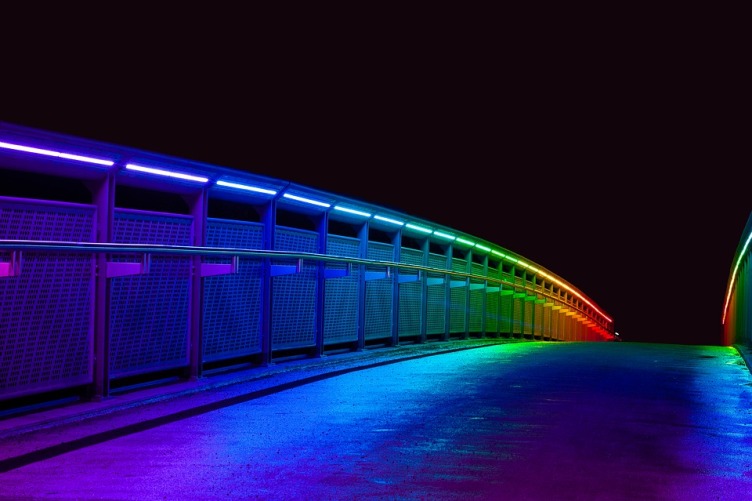What is an LED and what is the impact on our times?

September 21, 2020
More and more people are clear about the benefits and advantages of LED technology; artificial lighting with the most important energy efficiency that currently exists. A Lighting Emitting Diode (LED) is a semiconductor diode capable of emitting light. The semiconductor material is layered in the form of a p-n junction. When proper voltage is applied to the cables, the electrons can be recombined with the holes inside the device, releasing energy in the form of photons. Hence the name LED. In its beginnings the main use of the first red visible light LED diode that was marketed was limited to indicating only whether an electrical or electronic equipment or apparatus was connected to the power supply source, or in operation. Subsequently this diode also became part of information panels. Although in its beginnings its use was very limited to other practical applications due to the low variety of colors available and its low light efficiency.
Currently the new materials developed by the researchers have allowed that all colors of the electromagnetic spectrum visible to the human eye can be reproduced including white. And those not visible such as infrared (IR) and ultraviolet (UV). At the same time, the light efficiency of LEDs has been increased several times to such an extent that today they can overcome in some cases the lighting that normally provides an incandescent lamp of more power in watt (W).
The chip
The LED chip is made of a semiconductor material (silicon carbide) of about 5 millimeters, capable of generating light when current is applied to it. The chip is the true heart of an LED luminaire. On its basis are deposited different materials, whose mixture is the one that gives the color and the quality of the light. The chip is protected by a layer of polycarbonate.
A bit of history, in 1879 Thomas Alva Edison invented and patented the incandescent bulb. Thanks to its discovery, for more than a century we have enjoyed lighting. That is completed, since in September 2012 incandescent technology ceased to be manufactured in the EC.
The main reasons are 2, the first is their ineffectiveness, and this type of bulb only takes advantage of 10% of the energy to illuminate. 90% is transformed into heat.
The second, its reduced lifespan of only 1,000 h. makes it in efficient (duration of just 6 months with an average ignition of 5.4 h. daily). The latest technologies have proven to be much more efficient and less polluting, among which without a doubt, the most efficient is LED Technology.
Its application in informatics
LED applications in computing is very varied. Due to their high efficiency and durability as well as their small size, LEDs are experiencing an expansion in different industrial and daily consumption areas and applications at a breakneck pace. In this case it is used for the electronic sector, due to its small size, low power consumption and its fast on and off. LEDs are the ideal candidates for light signaling of the on, off or other type of information on small devices such as motherboards or computer tower. This technology is also used on computer screens where it is improved by its variety and color ratio, consumption and simplicity.
LED TVs also called OLED are the finest ever. Logically they are TVs that their screen lights up with LED diodes, which are tiny electronic bulbs, like the ones you can see in many traffic lights or car alarms (those lights that flash with alarms or with the cassette).
That is, they are TVs with liquid crystal display, also called LCDs, although the difference is that the screen is fed from the back with LED diodes instead of fluorescent tubes, which is how normal LCDs are illuminated. Let’s not forget the LED TVs are also LCD TVs (liquid crystal display).
What is the advantage of Led Diodes?
- The first is that they consume less energy than conventional lamps, normal bulbs emit light but also heat. Heat is energy we lose and what we want is light not heat. Well, LEDs also lose energy in the form of heat, but in much smaller amounts. This means that almost all the energy they consume is used in giving light and not heat.
- The use of LED technology in lighting has had a beneficial effect on the environment. They call it green lighting because it does not use mercury or greenhouse gases and increase global warming. This makes your choice when it comes to replacing them with traditional halogens the smartest decision, for their energy efficiency and light efficiency.
- 80% of the energy consumed by an LED is transformed into light. However, conventional bulbs only transform 20% of what they consume into light, everything else becomes heat.
- Another advantage is that the duration time is much longer. While a normal bulb has a lifespan of about 5,000 hours, the lifespan of an LED is longer than 100,000 hours of light. We are talking about 11 years of continuous light emission.
- Less light pollution: as a result of the directionality of the LED devices, the light they emit does not spread in all directions. This makes your exposure to heaven much less.
- With no filament like incandescent or halogen bulbs, they withstand shocks and vibrations without breaking. Increased resistance thanks to its IP protection against dust or water.
- Increased strength: easily resist thermal changes, humidity, vibrations, accidental shocks, and even oscillations in a home’s electricity flow. This means that the lights will not burn easily and that there will be no broken filaments at the slightest blow.
- The technological improvements that have been applied to computer screens, a safe value for a computer use of a monitor is that it has an sRGB adjustment mode. This ensures a realistic display of the colors on the screen and a better adaptation of the human eye, avoiding tiredness at long hours of exposure.








